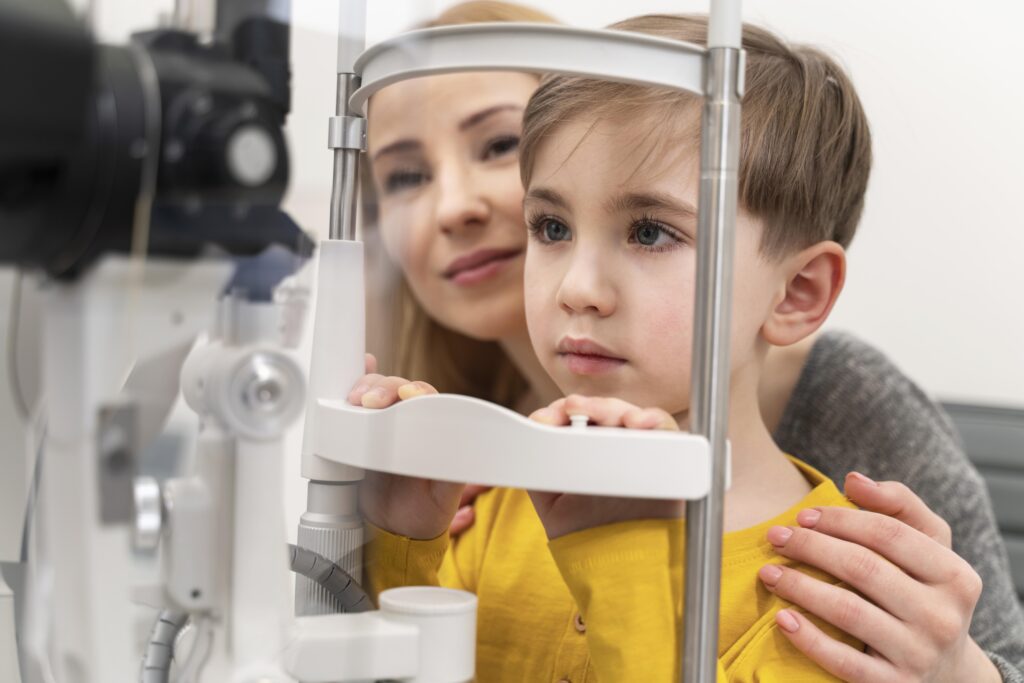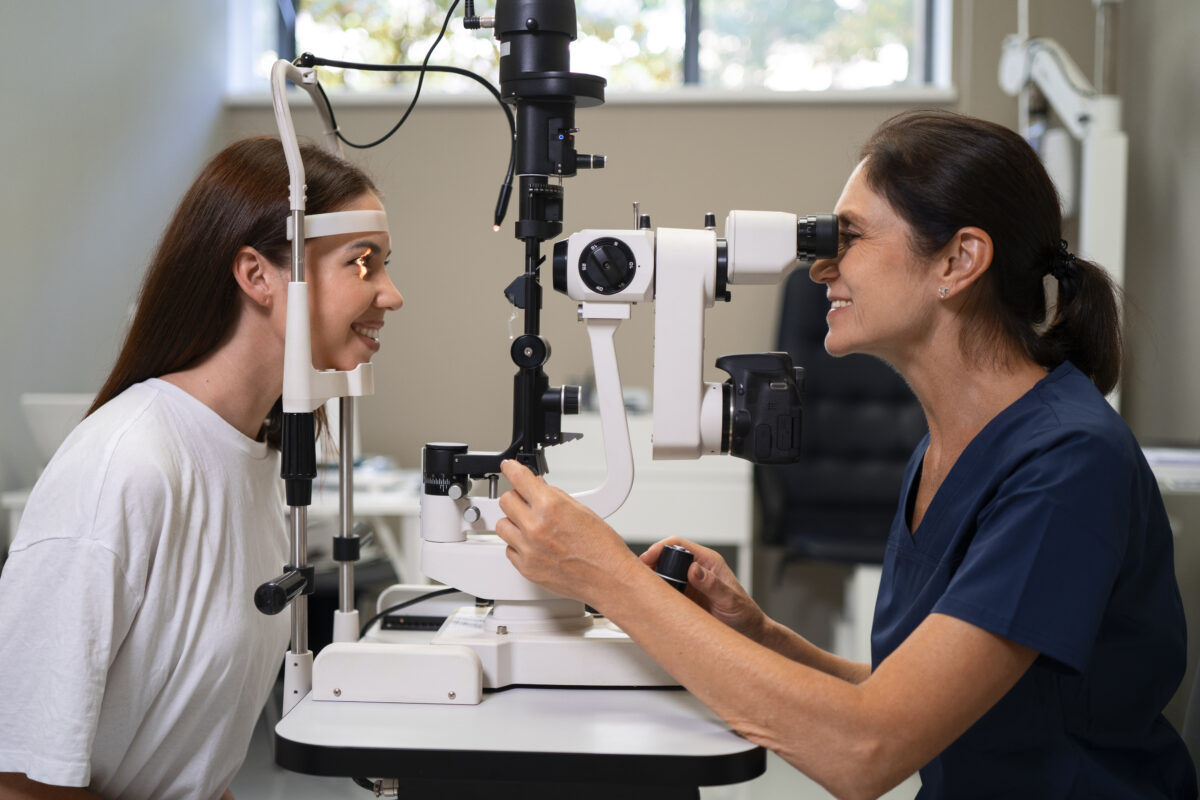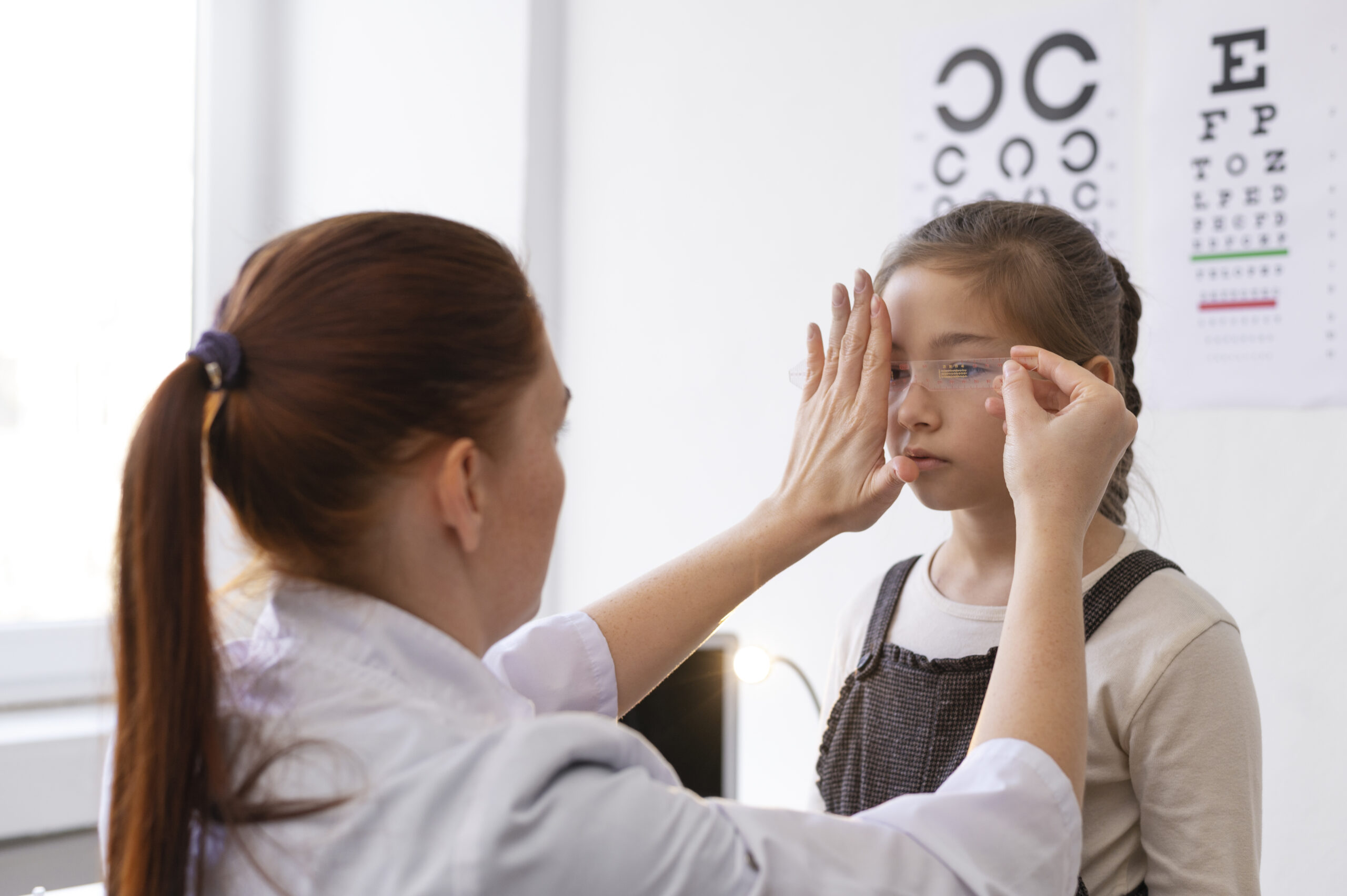Understanding Pediatric Eye Problems: An Overview of Pediatric Eye Health
October 9, 2024
Have Any Questions?
Please contact us, if you have any queries
Categories
 Introduction
Introduction
A child’s vision is a precious gift that lays the foundation for their overall development and learning. From the earliest stages of life, their eyes are constantly developing and adapting to the world around them. Unfortunately, many parents overlook the importance of regular eye exams and may not be aware of common pediatric eye problems. This blog aims to shed light on the significance of pediatric eye health, common conditions, and preventive measures to ensure your child’s vision is protected.
The Importance of Pediatric Eye Health
A child’s vision plays a crucial role in their cognitive, social, and emotional development. Good eyesight is essential for learning, playing, and interacting with the world. Early detection and treatment of eye problems can prevent serious vision loss and improve a child’s quality of life.
Key reasons for prioritizing pediatric eye health:
- Learning: Clear vision is essential for academic success. Children who can see clearly are more likely to excel in school, as they can better focus on their lessons and complete assignments effectively.
- Development: Vision is integral to a child’s overall development. It influences motor skills, hand-eye coordination, and spatial awareness. Proper visual development supports daily activities, from playing sports to drawing and writing.
- Preventative Care: Early detection of eye conditions can prevent more severe complications. Regular eye exams help in identifying problems like refractive errors or amblyopia before they become significant issues, ensuring timely treatment and better outcomes.
Understanding Vision Development in Children
A child’s vision undergoes significant changes during the early years. Let us look at a brief overview of key developmental milestones:
- Infancy: During the first few months, babies start to focus on and track objects. Initially, their vision is blurry, but they gradually begin to see shapes and colors more clearly.
- Toddlerhood: By the age of one, most children can see colors and recognize familiar faces. They also start developing depth perception and improved visual coordination.
- Preschool: Vision continues to sharpen, and children develop depth perception and hand-eye coordination. They begin to engage more in activities that require visual skills, such as puzzles and games.
- School Age: By this stage, visual acuity should be well-developed, which is essential for reading, writing, and other learning activities. Children should have the ability to see clearly at various distances and focus on details.
Common Pediatric Eye Problems
Several eye conditions can affect children. Some of the most common include:
- Refractive Errors: Conditions such as myopia (nearsightedness), hyperopia (farsightedness), and astigmatism are common refractive errors. They occur when the shape of the eye prevents light from focusing directly on the retina. These can be corrected with glasses or contact lenses.
- Amblyopia (Lazy Eye): This occurs when one eye becomes weaker due to disuse, often because the brain favors the stronger eye. Early detection and treatment are crucial to prevent permanent vision loss. Treatment may involve patching the stronger eye or vision therapy.
- Strabismus (Crossed Eyes): This condition occurs when the eyes are misaligned, meaning they do not point in the same direction. It can lead to double vision or poor depth perception. Treatment options include glasses, patching, or surgery, depending on the severity.
- Color Blindness: A genetic condition affecting the perception of colors. While there is no cure, color blindness does not typically impact overall vision and individuals can adapt by using color-coded systems.
- Conjunctivitis (Pink Eye): A common eye infection caused by a virus or bacteria. It leads to redness, itching, and discharge. Proper hygiene and medical treatment are essential to manage and prevent the spread of the infection.
The Role of Regular Eye Exams
Regular eye exams are essential for monitoring your child’s vision development and detecting potential problems early on. The American Optometric Association recommends the following eye exam schedule:
- First Eye Exam: At six months of age. This initial exam helps assess basic visual and eye health.
- Second Eye Exam: Around age three. This exam checks for developmental issues and ensures that vision is progressing normally.
- Regular Exams: Every year thereafter. Annual check-ups are crucial for identifying and managing any changes in vision or new issues that may arise.
Tips for Maintaining Healthy Eyesight in Children
Maintaining good eye health involves more than just regular exams. Here are some tips to help keep your child’s eyes healthy:
- Protect from the Sun: Encourage your child to wear sunglasses with UV protection when outdoors. Sun exposure can increase the risk of developing eye problems later in life.
- Healthy Diet: A diet rich in fruits, vegetables, and omega-3 fatty acids supports overall eye health. Nutrients like vitamin A, C, and E are particularly beneficial for maintaining good vision.
- Limit Screen Time: Excessive screen time can strain the eyes. Encourage regular breaks and the 20-20-20 rule: every 20 minutes, look at something 20 feet away for at least 20 seconds.
- Regular Eye Exams: Adhere to the recommended eye exam schedules to catch any issues early and ensure your child’s vision is developing correctly.
- Good Hygiene: Teach your child to wash their hands frequently to prevent eye infections and avoid touching their eyes with dirty hands.
- Safety First: Protect your child’s eyes from injuries by wearing protective eyewear during sports and other activities where eye injury is a risk.
Pediatric Eye Care at Dr. Rani Menon Maxivision
At Dr. Rani Menon Maxivision, we are committed to providing comprehensive eye care for children of all ages. Our experienced team specializes in diagnosing and treating a wide range of pediatric eye conditions. We offer:
- Comprehensive Eye Exams: To assess visual development and detect any potential problems.
- Treatment for Refractive Errors: Including glasses and contact lenses tailored to your child’s needs.
- Management of Amblyopia and Strabismus: Using specialized techniques and therapies to improve vision and alignment.
- Pediatric Eye Surgery: For more complex conditions requiring surgical intervention.
- Vision Therapy: Personalized programs to address and improve visual function and coordination.
Our goal is to create a comfortable and welcoming environment for our young patients, ensuring they receive exceptional care and optimal eye health.
Conclusion
Understanding the importance of pediatric eye health and taking proactive steps to protect your child’s vision can significantly impact their future. Regular eye exams, a healthy lifestyle, and prompt attention to any vision concerns are crucial for ensuring your child reaches their full potential. By prioritizing their eye health, you help them achieve a bright and successful future.
Don’t wait for a problem to arise—take charge of your child’s vision health today. Schedule an appointment with Dr. Rani Menon Maxivision and give your child the gift of clear, healthy vision for a lifetime.





